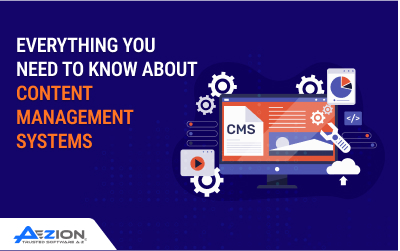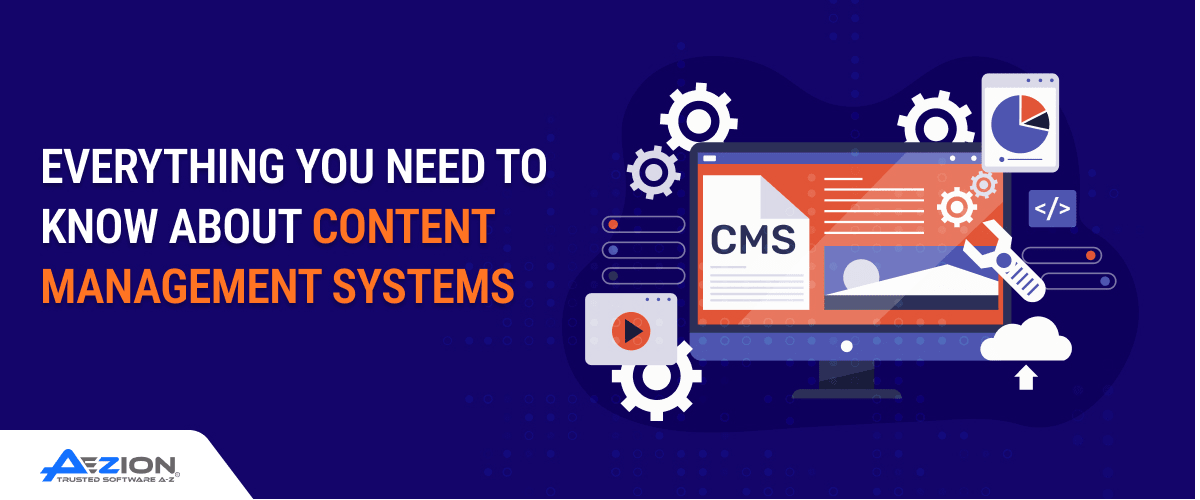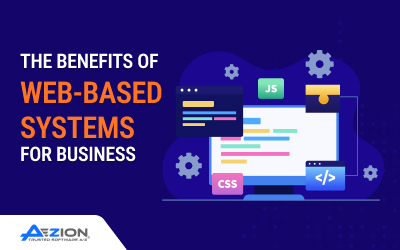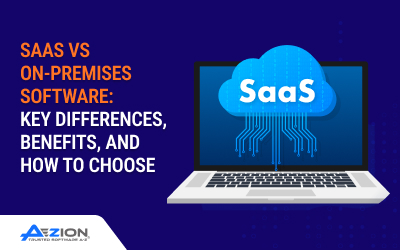Summary
Content Management Systems give businesses complete control over digital content creation, management, and delivery. A powerful Content Management System simplifies operations, supports faster updates, strengthens branding, and more. This blog outlines essential features, system types, use cases, and key factors to help you choose the proper CMS with certainty.
Introduction
Managing digital content at scale requires more than just uploading text and images. Content Management Systems offer a structured way to organize, edit, and publish content without deep technical skills. From large enterprises to small startups, a well-selected CMS becomes central to consistent digital presence and smooth content workflows.
What is a Content Management System?
A Content Management System is a software platform that manages digital content through a user-friendly interface. It allows users to create, edit, and organize content without writing code. By separating content from design, a CMS simplifies updates, improves collaboration, and gives businesses more control over their websites and digital assets. A CMS simplifies web content operations by dividing content tasks from backend complexity. Here’s how it works:
- Content is created and edited using a visual editor or interface.
- The system stores content in a structured format.
- Templates control how content appears on the site.
- Users can schedule, publish, and update without coding.
- Developers manage customization and backend logic independently.
Types of Content Management Systems
There are several examples of content management systems designed for different business needs. Each type handles content delivery and customization differently. Choosing the right one depends on your goals, technical environment, and publishing model. Below are the main types of CMS platforms used today, ranging from traditional setups to more modern, decoupled systems.
Traditional CMS
A traditional CMS connects the front-end and back end within a single platform. Users can manage content and design together, making creating and launching websites easier without requiring complex technical setups or multi-system coordination.
Decoupled CMS
A decoupled CMS separates the content layer from the presentation layer. Content is created in one system and delivered to a different front-end via APIs, offering greater flexibility while keeping content management simple for editorial teams.
Headless CMS
A headless CMS removes the front-end entirely, offering only content via APIs. This setup allows developers to deliver content to any device or platform, giving complete control over design, performance, and user experience across multiple channels.
Open Source CMS
Open-source CMS platforms give users full access to the source code, enabling deep customization and self-hosting. Supported by large developer communities, these systems are cost-effective and suited for businesses wanting total control over their websites.
Proprietary CMS
A proprietary CMS is a licensed product built by a single vendor. It includes bundled features, customer support, and regular updates. While it’s easier to maintain, customization options are limited compared to open-source or decoupled systems.
Key Features of a CMS
Content Management System Tools offer key capabilities like editing, publishing, media handling, and access control. These features help teams manage content efficiently across platforms. Below are the essential functions found in most modern CMS platforms.
Content Editing Tools
Most CMS platforms include visual editors that allow users to format text, insert media, and preview content in real-time. These tools remove the need for HTML coding and enable non-technical users to update content quickly and safely.
Publishing Controls
Publishing features let teams schedule content, set expiration dates, or push updates instantly. With role-based approvals and workflow support, these tools help maintain accuracy and control over what gets published, when it appears, and who can modify it.
Content Staging
Staging environments allow teams to test new content or layout changes before pushing them live. This reduces the risk of errors, supports collaboration, and gives editors a space to preview and adjust digital experiences across multiple devices or platforms.
Template and Theme Options
Templates control how content is displayed. CMS platforms provide customizable themes that let teams adjust layout, branding, and navigation without starting from scratch. This helps maintain design consistency while reducing development time across different site sections.
Analytics Capabilities
CMS analytics tools offer insights into user behavior, page performance, and engagement. Built-in or integrated reporting features help content teams make informed decisions about what to improve, remove, or highlight based on audience interaction and traffic patterns.
Security Features
Security functions include user access control, automated backups, activity logs, and protection against threats like cross-site scripting or data breaches. A secure CMS helps protect sensitive content while maintaining user roles and permissions for internal and external contributors.
Benefits of Using a CMS
Beyond exploring content management system examples, it’s essential to understand the value these platforms offer. A CMS supports faster publishing, improves collaboration, and maintains consistency across digital content. Below are key advantages businesses gain by using a content management system.
Increased Collaboration
A CMS allows multiple users to work on content simultaneously. With role-based access and approval workflows, teams can manage updates without confusion. This reduces delays, minimizes overlap, and creates a structured process for reviewing, editing, and publishing digital content across departments.
User-Friendly Interface
CMS platforms are designed for ease of use. Content creators can manage pages through intuitive dashboards, visual editors, and media libraries. This simplifies routine tasks, removes technical barriers, and allows faster publishing, even for teams without advanced design or development experience.
Built-In SEO Tools
Most CMS platforms have essential SEO features such as custom URLs, meta descriptions, header tags, and sitemap generation. These tools allow non-technical users to optimize content for search engines without relying on external plugins or developer involvement.
Scalability
A CMS supports business growth by handling increasing volumes of content, users, and digital assets. Whether managing a small website or a large enterprise portal, the system remains responsive and organized, making it easier to scale content operations without system overhauls.
Consistent Branding
Centralized templates and design settings allow businesses to maintain visual consistency across every page. Logos, colors, or layout changes can be applied globally, ensuring the site reflects current branding without requiring manual adjustments across individual content sections.
Organized Content Structure
CMS platforms allow structured content categorization using folders, tags, or hierarchies. This makes it easier to locate, update, and repurpose assets. A well-organized backend improves efficiency, supports user experience, and prevents confusion during content expansion or site updates.
Types of Websites You Can Build with a CMS
A CMS Content Management System is flexible enough to support various digital formats. From simple blogs to advanced e-commerce platforms, a CMS adapts to multiple business models and use cases. The most common types of websites teams can create and manage efficiently using a CMS are below.
Blogs
Blogs are one of the most popular use cases for a CMS. They allow easy content creation, categorization, and scheduling. A CMS gives writers control over formatting, SEO, and publishing, making it ideal for managing ongoing updates and maintaining a consistent publishing rhythm.
Static Websites
Static websites serve fixed content such as company information, portfolios, or landing pages. A CMS simplifies updates to these pages without coding. It helps maintain clean layouts, manage images or forms, and allows teams to make quick changes with minimal technical involvement.
ECommerce Stores
A CMS can manage product catalogs, checkout workflows, inventory, and promotions. With plugins or built-in e-commerce modules, businesses can launch full-scale online stores, track sales, and integrate payment gateways from a single platform without relying on external development.
Portfolios
Creative professionals use CMS platforms to showcase work through galleries, project pages, or client testimonials. Templates help maintain consistent design, while CMS tools make it easy to upload new work, manage categories, and highlight featured content for potential clients or employers.
Membership Sites
A CMS supports gated content, subscription models, and member-only access. These sites require features like login controls, payment integration, and role-based content delivery, all of which many CMS platforms support natively or through extensions.
Online Course Platforms
CMS tools can be extended to host learning content such as videos, assessments, and course materials. Admins can organize content into modules, track progress, and assign permissions ideal for training portals or educational websites serving multiple user groups.
Forums
Forums allow users to interact, post questions, and join discussions. A CMS provides tools to moderate threads, create categories, and manage user access. These features support community-building and user engagement within a structured online environment.
Social Networks
Some CMS platforms allow custom features for social communities, such as user profiles, activity feeds, and messaging. Though more complex, these sites can be built and maintained using CMS plugins or integrations to encourage user interaction and support scalable growth.
Examples of Leading CMS Platforms
Looking at content management system examples helps you compare available options. Each platform offers different strengths for specific needs, from small websites to complex enterprise portals. Below are some of the most widely used CMS platforms across industries today.
WordPress
WordPress is the most widely used CMS globally. It supports blogs, e-commerce sites, and business portals. With thousands of plugins, themes, and a large support community, it offers flexibility for both beginners and developers to build and maintain scalable websites efficiently.
Joomla
Joomla offers more flexibility than beginner CMS platforms, requiring a moderate learning curve. It supports custom templates, extensions, and multilingual sites—ideal for developers and businesses needing structured content with strong access controls and built-in SEO capabilities.
Drupal
Drupal is known for its strong security and scalability. It suits large, complex websites that require custom workflows and enterprise-grade functionality. Though it requires technical skill, it offers powerful tools for content management, access control, and user permissions.
Shopify
Shopify is a hosted CMS designed for e-commerce. It includes everything needed to run an online store product page, payment gateways, inventory management, and marketing tools while minimizing technical work for setup, maintenance, and updates.
Magento
Magento, now Adobe Commerce, is a powerful CMS built for enterprise e-commerce. It offers advanced product management, flexible APIs, and extensive customization. Ideal for businesses that require scalability, multi-store management, and deep integration with third-party tools.
Adobe Experience Manager
Adobe Experience Manager combines CMS functionality with digital asset management. It is built for enterprises that need personalized experiences, workflow automation, and integrations with Adobe’s ecosystem. This platform best suits large, global websites with complex content operations.
Squarespace
Squarespace is a design-focused CMS known for clean templates and ease of use. It’s ideal for creatives, small businesses, and portfolios. Users can manage content, media, and layouts without coding, using a drag-and-drop interface and built-in analytics tools.
Wix
Wix is a beginner-friendly CMS offering pre-built templates and visual design tools. It supports small websites, online stores, and service businesses. Wix provides flexibility with minimal setup and a wide range of features packaged into a hosted solution.
How to Select the Right CMS for Your Needs
With many content management system examples available, the right choice depends on your business goals, technical capabilities, and content plans. Assessing how each CMS aligns with your workflows, integration needs, and ability to support future growth is vital. The points below will help guide that decision.
Understand Your Business Requirements
Before comparing CMS options, identify your website goals, target audience, and content structure. This helps narrow down platforms that support your publishing model, required features, and future scalability. A clear business case eliminates tools that won’t fit long-term operational needs.
Consider Technical Skill Level
Some CMS platforms require developer involvement, while others offer visual editors for non-technical users. Evaluate the skills available on your team and choose a system that fits your comfort level. Avoid platforms that may require ongoing external support to operate.
Review Integration Capabilities
A good CMS should connect smoothly with existing tools like CRM systems, analytics, or marketing platforms. Review API access, plugin libraries, and extension options to confirm that the CMS supports your ecosystem without needing custom development for every integration.
Examine Scalability and Security
Your CMS should handle content growth, increased traffic, and user expansion without performance issues. Security is just as important—look for access control, regular updates, and threat protection. These factors are critical, especially for e-commerce or enterprise-level implementations.
Check Vendor Support and Community
Strong vendor support or an active community can reduce long-term friction. Evaluate whether the CMS has reliable documentation, training resources, forums, or direct support. The more accessible the help, the easier it becomes to maintain and upgrade your platform.
Conclusion
Choosing the right Content Management System directly impacts how your business manages and delivers digital content. With so many options, understanding the key features, types, and real-world content management systems helps you make a confident, informed decision. The proper CMS simplifies content operations and positions your team for long-term success across any digital environment. If, as a business owner, you are looking for experts to facilitate your choice of the proper CMS, simply get in touch with a leading Custom Software Development Company and get started today!
FAQs
What is the best CMS for beginners?
Platforms like WordPress and Wix are great for beginners. They offer user-friendly interfaces, extensive templates, and community support, allowing users with little technical experience to build and manage websites effectively.
Is WordPress a content management system?
Yes, WordPress is a widely used content management system. It supports a variety of websites, from blogs to e-commerce, and offers extensive customization through plugins and themes.
What are the advantages of a headless CMS?
A headless CMS separates content management from presentation, providing flexibility to deliver content across multiple channels and devices using APIs. This approach supports modern app development and personalized user experiences.
Can I build a website without a CMS?
Websites can be built from scratch using coding languages like HTML, CSS, and JavaScript. However, managing and updating content manually becomes time-consuming and requires technical skills.
How do CMS platforms support SEO?
CMS platforms provide tools for optimizing metadata, URLs, and site maps. They often include SEO-friendly templates and plugins that help improve search engine visibility without needing advanced technical knowledge.




